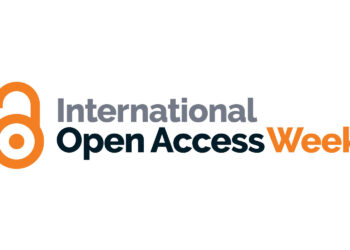
- Image via Wikipedia
The brouhaha created by Rupert Murdoch‘s gripes about Google has uncorked a simmering set of hopes and dreams from traditionalists. Basically, the hope can be stated as, Can we go back to an age of publisher-centric content distribution?
Google’s CEO, Eric Schmidt, published an editorial in Rupert Murdoch’s Wall Street Journal last week explaining a few things to those dreamers who think the innovation cake can be unbaked:
- News content is only a small fraction of all of Google’s content, and the ad revenue Google generates proximal to news content is relatively tiny (aka, dispensable).
- Google sends billions of users to news sources every month.
- Google doesn’t show complete news content, just headlines and a line or two, except when an agreement allows otherwise.
- Google doesn’t control any publication’s pay gates.
Schmidt ends the editorial by referring to a Buggles‘ 1979 hit:
Video didn’t kill the radio star. It created a whole new additional industry.
Schmidt’s analogy is rhetorically useful, but it doesn’t get to the bottom of the issues facing news providers.
While the wishful thinking of news providers might be fulfilled by withholding the content from the search engines and extracting revenue deals in exchange for crawling and indexing that content, the money will never materialize because access to news isn’t controllable in the modern information age.
The issue facing news providers isn’t that the news sources are being exploited by search engines, it’s that the useful lifespan of proprietary news has decreased from days (pre-newspaper), to hours (newspaper and network news) to minutes (cable news) to seconds (blogs, search, Twitter, Facebook).
Imagine the state of news if the protectionists were to prevail — a story is published in the Wall Street Journal and not indexed in Google; a savvy reader Twitters about it or writes and publishes a quick blog post; the tweet or post are indexed; within seconds, awareness exists outside the news source, and the search engines can effectively index the topic.
It’s the approach of the real-time Web.
The real-time Web may kill the radio star, to continue Schmidt’s analogy.
Another interesting angle is that while Murdoch and others may complain there isn’t enough advertising in the world to support online news, the Schmidt editorial is not behind a pay wall and has four ads against it.
That’s four ads for one story. Imagine the print equivalent — the article would probably be on a broadsheet with other stories, and perhaps one ad facing the page of news. Not a targeted ad, not a clickable ad, (probably) not a color ad, and definitely not a video ad.
Instead, a static, non-interactive, and boring ad.
It seems the problem isn’t about ads per story, or ad effectiveness or capabilities, but price per ad.
Personally, I’m suspecting that a more productive approach for Murdoch and his cohorts might be to jack up online ad prices dramatically and weather the storm until advertisers acknowledge that online ads are more valuable than print ads.
Until that happens, online will be undervalued. And that’s the pricing issue here.
Murdoch and his ilk should advocate for the value of the audience they have, not the content they create, and push the value hard, up to the level of print audience, if not higher.
As we approach 2010, to do otherwise is irrational.
Discussion
7 Thoughts on "The Real-time Web May Kill the Radio Star — Unless Radio Toughens Up"
Allow me to be the first pedant to point out that the song lyrics say, “Video killed the radio star.” Schmidt says that video “didn’t kill the radio star.” He’s wrong, rhetorically and factually. The song also includes ominously, “We can’t rewind/We’ve gone too far.”
As Clay Shirky has remarked, NOTHING can save newspapers.
There’s an argument to be made that Google has already lost the battle when it comes to real-time news, as the rate at which it spiders and updates is glacial compared to things like Twitter and Facebook.
It’s interesting to note that Google has paid for content in the past, setting up deals with Myspace and Twitter, and partnerships with movie and television studios on YouTube. It’s a tacit admission that not all the traffic Google provides can readily be monetized by the recipient. Here though, the question is whether the content being offered (news) is of sufficient value for Google to pay as they have in other situations.
Apparently, Google crawled your response, then did this: http://www.nytimes.com/2009/12/08/technology/companies/08google.html?_r=1&ref=technology. They’re not giving up without a fight!
This is a good example of Google paying for content:
“Google struck formal partnerships with Twitter, Facebook and MySpace to quickly bring updates from those services into its search index. The companies did not disclose terms of those deals, although a person briefed on the Twitter deal said Google made a large up-front payment.”
It’s interesting that they value what people are saying on sites like Twitter and Facebook enough to pay for it, but seem uninterested in “professional” journalism in the same way.
I think it also shows how audiences aren’t commodities while news is. You have to pay for people, but news doesn’t last long enough.
But if, as Schmidt notes, Google sends billions to news sources, then there’s an audience there as well (but apparently not one Google is willing to pay for).
Clearly that audience is not going there for immediate real-time news, and papers need to give up the idea that they’re still in this game (they lost to cable news decades ago). But they do have something of some apparent value to those billions of readers.
![Reblog this post [with Zemanta]](http://img.zemanta.com/reblog_e.png?x-id=a5dd20da-2a77-4c7d-a8c1-b5f49af6c05b)


